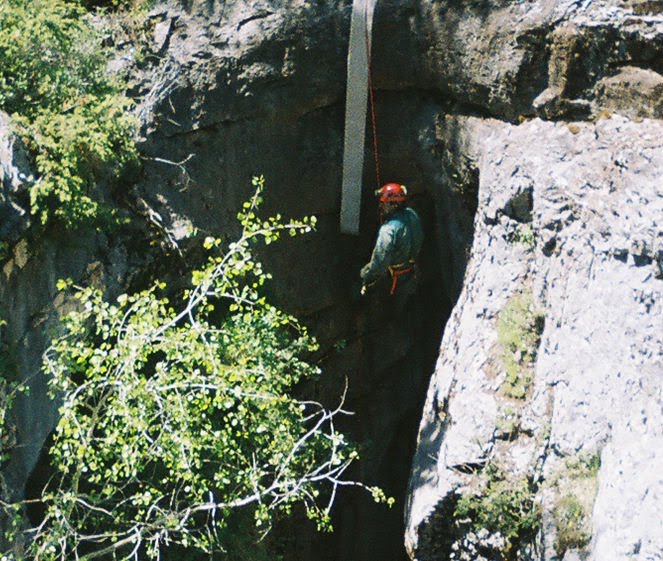What are the differences between rock climbing and vertical caving? They both require ropes. They both require harnesses and devices such as carabiners and screw links. They both will utilize bolts and other wall or rock attachment devices. So, what makes one different from the other?
Let's start off with rock climbing, The rope a climber uses is of the dynamic variety. It stretches when a shock load is applied to it. Climbers use these ropes as a safety by attaching it to themselves and carrying it up the rock face with them. Someone at the bottom (the belayer) holds on to the rope. When the climber gets to a certain point on the wall, they attach a cam, bolt, or other attachment device to the wall, hook a carabiner through it and slip the rope through that. They then continue on up the wall, repeating these steps every so often.
If the climber should slip and fall, they would fall a distance twice the length of rope from where they are to the last attachment point. The rope would be belayed or held by the person at the bottom. The rope will stretch and absorb the shock of the fall. The belayer has the rope inserted through some form of a belay device such as an ATC or figure eight. These are friction devices that lock on the rope to help the belayer "catch" the climber.
I vertical caving, technical rope work, rescue situations and arbor rope work, the rope utilized is of the static variety. This rope does not stretch but is much more durable that the dynamic type. When using this type of rope, one never uses it as a safety to catch a falling person. To do so could cause extreme harm to that person.
Generally, these situations call for the rope to be ascended and descended as a method of getting up and down the wall, cliff, pit, tree etc. The rope is tied off at the top of the climb and then is either descended to get to the bottom of a pit or vertical cave - or - used to ascend a tree, structure or other location.
To descend, one must use a descender type device such as a figure eight, rack type descender or bobbin type descender. These are attached to the harness and then to the rope. The act of abseiling or rappelling the rope to the bottom is controlled by the amount of friction applied to the rope.
When ascending the rope, one uses a rope ascending system. It utilizes ascenders which slide up the rope easily but catch when coming down the rope. They are attached to the climber via the harness as well as either the leg or hand. There a rope walking systems, sit-stand (frog) systems and others. When used correctly these systems can easily navigate a rope in very short order.
So, although they utilize some of the same equipment, they are vastly different types of rope work. When choosing either of these sports, make sure you have the right gear for the right type of climbing.
Wednesday, January 13, 2010
Subscribe to:
Post Comments (Atom)


No comments:
Post a Comment